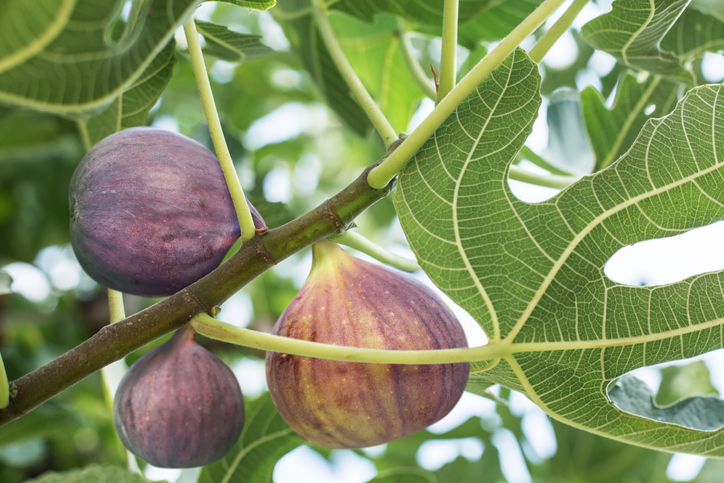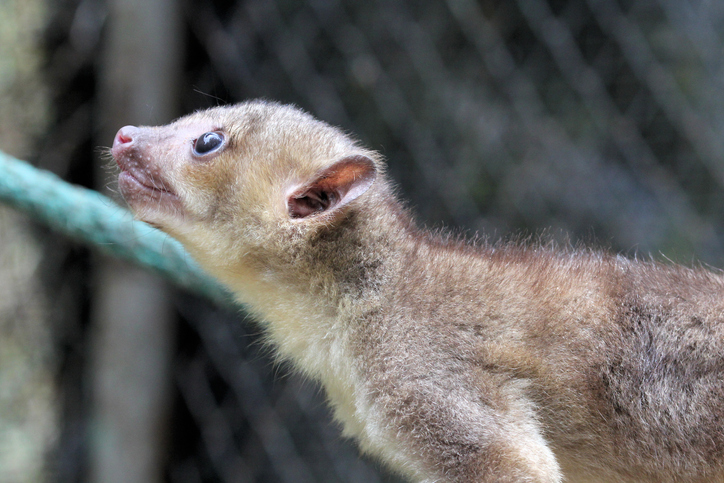The kinkajou (Potos flavus), also called a honey bear, is an interesting fellow people look forward to meeting when they visit the wild animal park. While the name may not be familiar, the kinkajou is related to something far more familiar, the raccoon. Today we are going to learn what makes this rain forest mammal so unique.
Physical characteristics

The kinkajou is an intriguing animal, distinguished by its round head, large eyes, and a long prehensile tail. Their tail and extensible tongue make it easy for them to maneuver among tree limbs. Its body length is about twenty-four inches, excluding the tail. They usually do not weigh more than ten pounds and have a soft coat that changes colors based on the season. Their dense fur provides natural protection from rain, heat, and other outdoor elements. They also have short legs, sharp claws and green or yellow eyes. Females tend to be smaller than males but otherwise have similar features.
Diet

Ripe fig fruits on the tree.
Officially, the kinkajou is a carnivore, and it has the sharp teeth that go with it. However, they are omnivores and eat leaves, flowers, and fruits, especially figs. They might also eat insects when convenient, and they have long tongues that make it easy to enjoy nectar from flowers.
Habitat

Tropical tree in the jungle of Cabo Blanco in Nicoya Peninsula, Costa-Rica
The kinkajou is native to Central America and South America, living in tropical rainforests and mountain forests. They tend to congregate in fruit trees and spend a great deal of time in the forest canopy, which they can easily navigate with their prehensile tail. They are nocturnal animals, so people do not often see them in the wild.
Behavior
The kinkajou is mostly solitary, but they gather at times to socialize, play, and sometimes sleep. They also may gather to forage for food, which they do after dusk. They use their long tail as a fifth hand while climbing. They can be territorial, driving outsiders out of their area with aggressive displays. Scent glands at the corner of their mouths, throats and abdomen help them mark their territory.
Baby kinkajou

The female kinkajou gestation period is up to 118 days and gives birth to a single offspring at a time. Babies start to eat solid food at around eight weeks. They quickly climb and navigate through trees and usually start climbing by themselves in about three months. Female baby kinkajous stay with their mothers for approximately two years, longer than their male counterparts.
Conservation
Kinkajous are not an endangered species. However, they face threats from poachers who hunt them for fur and meat or exotic pet trade. Because they are exotic animals, a pet kinkajou is not recommended no matter how cute they are! They are most active in the middle of the night, often destructive, and not to mention kinkajou bite is painful.
The kinkajou is quite an exciting animal and fairly striking to see in person with their extra-large eyes and distinct features. Stop by and meet one during your next visit and be sure to tell us all about it on Facebook!
Share this post:

